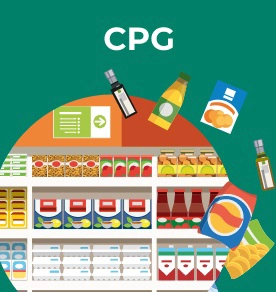The Battle for Basmati: How India Is Beating the World with Aroma and Authenticity

As global demand for fragrant, traceable rice soars, India is turning its age-old grain into a modern luxury — and leaving competitors scrambling to catch up.
By Nandini Banerjee, Managing Editor
Apr 07, 2025 / 30 MIN READ
There’s a quiet revolution simmering in your kitchen pantry — and it smells like aged, aromatic basmati rice. Once confined to Indian households and diaspora kitchens, this fragrant, long-grain rice is now making waves on menus from London to Los Angeles. Global chefs are calling it “the champagne of rice”. Consumers are willing to pay a premium for its aroma, texture, and traceability. And India, the largest producer and exporter of Basmati, is at the center of this grain-fueled gold rush.
But it’s not just about what’s on your plate anymore. Basmati is becoming a symbol of soft power, food diplomacy, and agricultural excellence. From the fields of Punjab to the shelves of Whole Foods and Carrefour, this rice is being rebranded as a global luxury.
Behind the scenes, Indian exporters are battling not only competition from Pakistan but also rising residue regulations, climate concerns, and the challenge of turning a centuries-old staple into a modern-day lifestyle product.
So, what’s really cooking in India’s rice belt? And why is the world suddenly obsessed with the origins, ethics, and elegance of this simple grain?
The New Taste of Luxury
“We can’t age basmati like whisky, but we’re learning to tell its story with just as much romance,” says Vikram Marwaha, Joint Managing Director, DRRK Foods, one of India’s major Basmati rice exporters.
Premiumization of basmati is no longer just about the grain — it’s about the experience. Think polished packaging, QR-coded traceability, and cleaner, low-residue crops. “The world doesn’t just want rice anymore. It wants authenticity on a plate,” Marwaha explains. “To distinguish themselves in a competitive market, basmati brands are adopting premium marketing strategies reminiscent of those used in the wine and spirits industry. These strategies include emphasizing the rice's unique aroma, long grains, and health benefits to position it as a premium product.”
The rise of Indian and Middle Eastern cuisine globally—especially in countries like the UK, the US, and UAE—is fueling demand for high-quality, long-grain rice that does more than fill a plate; it elevates it.
From Punjab Fields to Paris Plates
India isn’t just exporting rice. It’s exporting culture. With 75% of the world’s basmati grown in Indian soil, the country has a narrative that no one else can replicate. “The heritage, the exclusivity, the centuries-old tradition — these are our competitive moats,” says Marwaha.
Trade bodies and government-backed institutions like APEDA are working hard to preserve and promote India’s basmati heritage abroad, even taking legal steps in the European Union to guard against dilution of the GI tag.
For Indian exporters, basmati is more than just an agricultural commodity. It’s an ambassador of Indian culture and culinary supremacy.
What about Organic Basmati?
While “organic” has become a buzzword across global supermarkets, it still represents a tiny slice of India’s basmati exports — just 1–1.5%, to be exact. But don’t write it off just yet.
“The real growth is in low-pesticide and residue-free basmati,” Marwaha says. “These variants are gaining traction in the EU and Middle Eastern markets, where food safety norms are among the strictest. Organic will grow, but residue-free is where the big opportunity lies today.”
India is also focusing on sustainable farming models, crop rotation, and blockchain-based traceability to future-proof its exports. Key methods gaining traction include water-efficient techniques like the System of Rice Intensification (SRI), which reduces water usage and increases yields. “India's Basmati rice industry is embracing innovative, sustainable practices to enhance pesticide-free and organic cultivation. Farmers are increasingly adopting organic techniques, including the use of organic manure, biofertilizers, mixed farming, and integrated pest management, to maintain soil health and reduce chemical inputs. Additionally, precision agriculture technologies are being introduced to optimize resource use and minimize waste,” he adds.
How Indian Farmers are Changing the Game
Gone are the days of chemical-heavy cultivation. Today, the Indian Basmati ecosystem is slowly adopting sustainable practices — from organic manure and composting to laser land leveling and water-efficient irrigation techniques like the System of Rice Intensification (SRI).
In the face of climate change and international pressure, DRRK Foods and others are also collaborating with agronomists to encourage disease-resistant varieties like Pusa Basmati 1718, which helps reduce pesticide use.
“We’ve moved beyond yield. It’s about sustainable yield now,” Marwaha emphasizes.
Reinventing the Rice Aesthetic
Basmati rice has long been sold like a commodity. No more. Today, Indian exporters are investing in branding and design to elevate Basmati to the status of a gourmet product.
“Packaging isn’t just a box — it’s a billboard,” Marwaha states. Resealable pouches, recycled materials, and elegant, matte finishes are transforming Basmati from a pantry staple to a premium kitchen essential.
With the global packaged Basmati market expected to touch $7.2 billion by 2030, branding isn’t just nice to have—it’s necessary.
How Europe’s Pesticide Panic Sparked a New Era
In 2020, the EU cracked down hard on Maximum Residue Limits (MRLs) for pesticides in food imports. For Indian exporters, it was a wake-up call. “We had to adapt overnight,” says Marwaha. But in hindsight, it might’ve been a blessing in disguise.
“That external pressure accelerated innovation. Farmers began using natural alternatives and precision tools. Exporters overhauled quality testing protocols. What emerged was a cleaner, more consistent product — and a stronger reputation in Europe,” Marwaha adds.
Now, Indian basmati enjoys a loyal and growing customer base in the EU, with increased trust and fewer shipment rejections.
Building a Brand, Not Just a Supply Chain
The new Indian basmati playbook isn’t just about scaling — it’s about storytelling. Marwaha believes the real differentiator is building an emotional connection with global consumers.
“We’re not just selling rice. We’re selling traceability, clean farming, fair-trade practices, and sometimes even carbon-neutral production,” he says.
DRRK Foods is exploring everything from solar-powered processing units to AI-based quality control for consistency across shipments. These upgrades aren’t just operational—they’re part of a narrative that today’s global consumers demand.
The Basmati GI tag controversy with Pakistan has sparked intense geopolitical interest. Pakistan, which also grows basmati in its Punjab region, wants joint ownership of the GI tag in European markets. India, however, is standing its ground.
“There’s no compromise on identity,” Marwaha insists. “We’re not just protecting a name. We’re protecting centuries of cultivation knowledge.”
The Indian government, along with trade bodies like AIREA and APEDA, continues to actively challenge Pakistan’s claims through diplomatic and legal means.
Going Phygital
E-commerce is reshaping how Basmati reaches global households. From Amazon to gourmet online grocers, Indian rice brands are targeting direct-to-consumer channels in Europe, North America, and Southeast Asia.
But it’s not just digital. Retail partnerships with ethnic and mainstream supermarkets are also expanding, creating a phygital (physical + digital) strategy that meets consumers where they are.
“Visibility is everything,” Marwaha says. “It’s no longer enough to be in the container. You have to be in the cart.”
The future of Indian Basmati is looking not just profitable but purposeful. The industry is aligning itself with global food trends — clean labels, climate-resilient farming, and value-added branding. But at the heart of it, the core strategy remains the same: deliver excellence.
“People don’t just want basmati. They want the best Basmati,” says Marwaha. “And the only place they trust to deliver that consistently is India.”
India’s basmati rice isn’t just surviving the global food shift — it’s thriving in it. With smart farming, sharper branding, and relentless focus on quality, India is redefining what a humble grain can mean on the world stage. While others are trying to catch up, India’s already plating the future — fragrant, fluffy, and full of flavor.
There’s a quiet revolution simmering in your kitchen pantry — and it smells like aged, aromatic basmati rice. Once confined to Indian households and diaspora kitchens, this fragrant, long-grain rice is now making waves on menus from London to Los Angeles. Global chefs are calling it “the champagne of rice”. Consumers are willing to pay a premium for its aroma, texture, and traceability. And India, the largest producer and exporter of Basmati, is at the center of this grain-fueled gold rush.
But it’s not just about what’s on your plate anymore. Basmati is becoming a symbol of soft power, food diplomacy, and agricultural excellence. From the fields of Punjab to the shelves of Whole Foods and Carrefour, this rice is being rebranded as a global luxury.
Related Stories
India’s fragrance market is no longer confined to deodorants picked up as an afterthought at the kirana or pharmacy counter. Over the last few years, perfumes have moved decisively into the…
- By Richa Fulara
- |
- 8 Min Read
Once considered a quiet corner of the apparel industry, India’s innerwear market has emerged as one of its most vibrant growth engines. What was traditionally a necessity-driven category has now…
- By Vaishnavi Gupta
- |
- 8 Min Read
In a landmark move that could reshape India’s Rs 16 lakh crore dairy industry, the 56th GST Council has approved a rationalization of GST rates on milk and milk products — a decision that has already…
- By Vaishnavi Gupta
- |
- 7 Min Read




